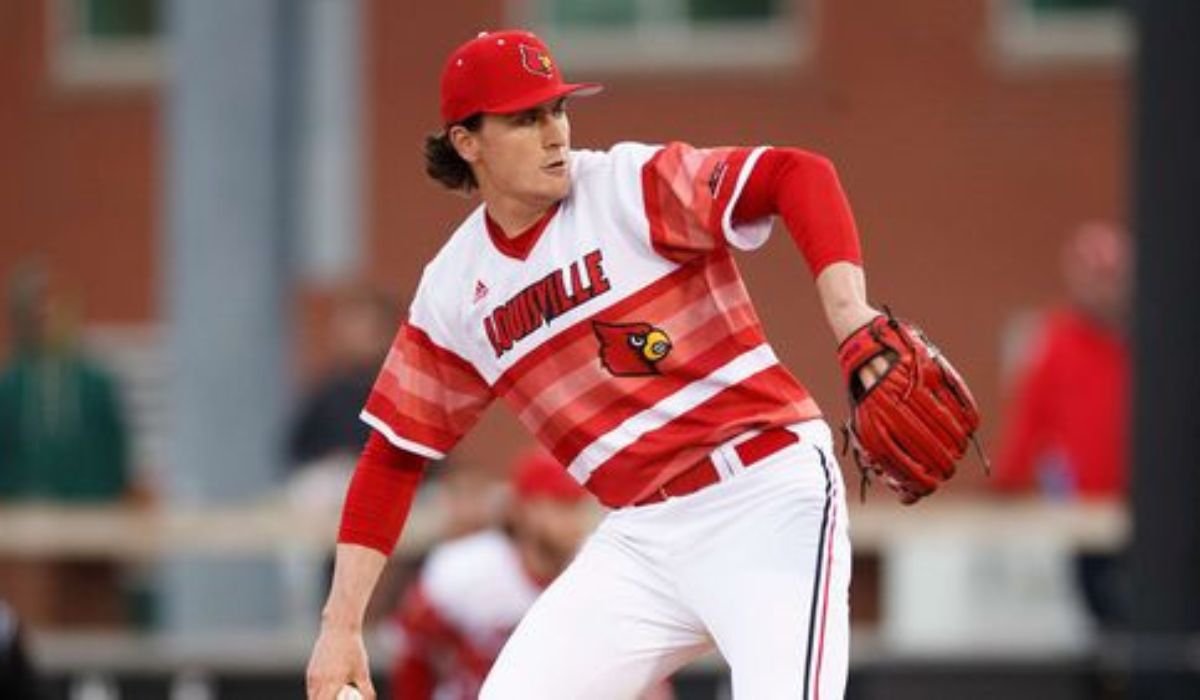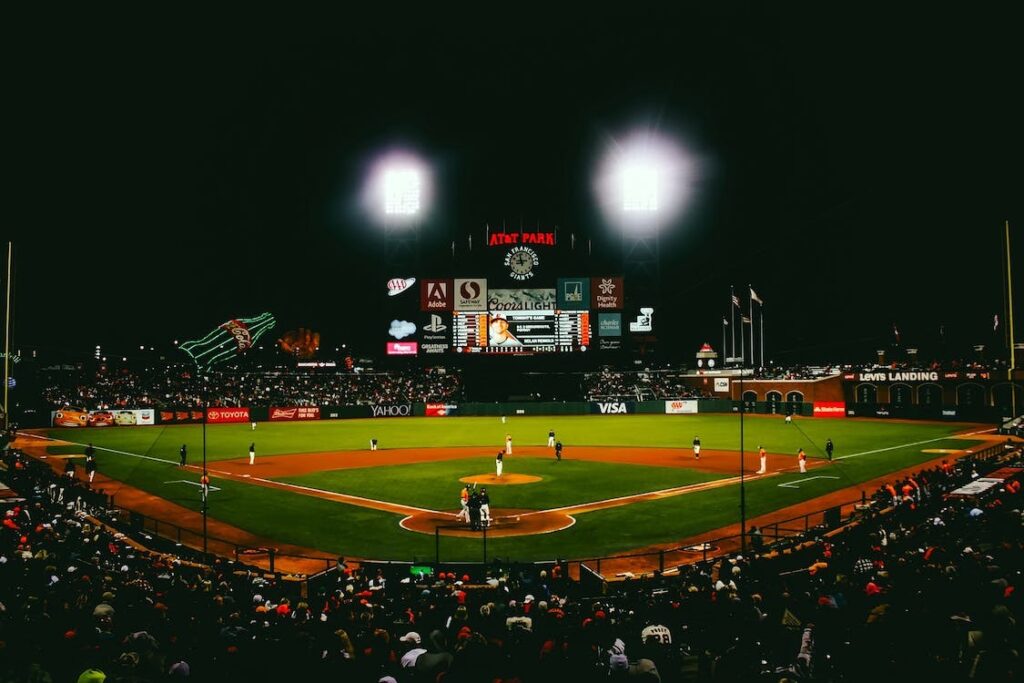
Have you ever thought about the hardest spot in baseball? Some say it’s the pitcher, others argue for the catcher. We all have different views. But, what position really is the toughest with the most challenges?
Key Takeaways:
- There are nine positions in baseball, each with its own unique demands and challenges.
- First basemen require flexibility and concentration, but have less throwing responsibility compared to other positions.
- The middle infield positions of shortstop and second base demand exceptional quickness and agility, with second basemen specializing in turning double plays.
- Third basemen, known as the “Hot Corner,” must demonstrate quick reactions, great reflexes, and a strong throwing arm.
- Pitching is considered one of the most physically demanding positions in baseball, requiring technical skill and mental toughness.
The Challenges of First Base
First base demands you to be flexible and reach far for throws. If you’re tall, you have an edge as catches may need you to stretch or do splits. It’s crucial to stay focused at first base. Most plays in a game happen there. Yet, first basemen don’t throw the ball as often as other players do.
Playing first base means more than just catching the ball. You need to stretch quickly and accurately to get the runner out. It’s all about being flexible and quick to catch throws, even if they’re not perfect.
“At first base, you have to be able to stretch and make adjustments quickly. It’s all about positioning yourself correctly and getting to the ball in time.” – Mark Davis
Your position near home plate means you must react fast to field balls. For a first baseman, focus is everything. Missing a play can cost your team. So, you always have to be ready, preparing for what might happen next.
Despite their main role in catching and stopping plays, first basemen don’t throw the ball as much as other positions. They focus on defense and making sure the batter is out. This means they worry less about throwing the ball great distances to other bases.
The Demands of the Middle Infield

Shortstop and second base demand exceptional quickness and agility. Shortstops cover a wide area. They’re key players who deal with many ground balls. They also support the second and third basemen when needed. Second basemen have less ground to cover. However, they need sharp skills to turn double plays, making their job tough.
Quickness and Agility
Being quick is a must for shortstops and second basemen. They react fast to field or leave ground balls. Every move these players make is fast and precise. They move sideways, shift directions quickly, and throw accurately even while running.
Double Plays
Turning double plays is key for middle infielders. This move starts with a ground ball. The fielder steps on a base and throws to first in a flash. It demands perfect timing and coordination. A double play can turn the game around, stopping the other team from scoring.
“Being a middle infielder requires a special set of skills. You have to be quick on your feet and have a strong arm. Turning double plays is a challenge, but it’s also an incredibly satisfying feeling when everything comes together.” – Alex Rodriguez
Shortstops deal with more ground balls across a wide field. Second basemen face added pressure to turn double plays. Their roles demand top-speed actions and faultless execution of plays. This makes the middle infield one of baseball’s most challenging spots.
The Toughness of the Hot Corner
Third base is the “Hot Corner,” where plays are made in split seconds. Players at this spot need to be fast and precise. They make long throws to first and field bunts along the third base line. Success here requires quick thinking, lightning reflexes, and a strong arm.
“Playing third base is like being a human reaction machine. You have to be lightning quick and make split-second decisions,” says former MLB third baseman Alex Rodriguez.
The Skills of a Pitcher
In baseball, pitching is very tough physically. Players need to throw the ball to the other team. They have to be smart and strong. It doesn’t matter if they start the game, come in later, or finish it. Each job needs special skills. Baseball players like this work very hard.
To be a good pitcher, you must be great at many pitches. These include fastballs, curveballs, and changeups. Anyone can throw a ball, but doing it right is key. A pitcher’s accuracy and control decide the game. They practice a lot to get it perfect.
Being a pitcher also needs a strong mind. They must stay calm, even when things are tough. Pitchers study their opponents to find their weak spots. Then, they quickly choose the best pitch to throw. It’s hard to always do well and handle the pressure. But, good pitchers can do it.
Pitching is not easy on the body. Throwing the ball too much can hurt the arm. This can lead to surgeries and other arm problems. Pitchers must be strong and train hard to prevent injuries.
To sum up, pitchers face serious challenges in baseball. They need to be good at many things. From their skills to their strong minds, pitchers are crucial to the game. Us fans should always cheer for them. They work really hard, and they make baseball exciting.
Conclusion
In conclusion, picking the toughest spot in baseball is up for debate. Each role offers its own tough challenges. It needs special skills from the players.
Catchers face a lot. They direct the pitching, pick plays, and manage base running. To excel, they must talk well, be quick, and handle long periods squatting.
Pitchers need both skills and a strong mind. They’re under a lot of stress with every throw. It’s their job to place pitches smartly and keep batters guessing. This makes being a pitcher very demanding.
Shortstops and third basemen also have tough jobs. Shortstops move a lot, often dealing with tough hits. Third basemen need fast reactions and powerful throws to cover their area well.
Choosing the hardest baseball position is personal. It depends on what you value. But what’s clear is all these roles ask a lot. The mental strength, skill, and toughness needed make this debate interesting.

Meet Daniel Anderson, the heart and soul behind Baseball Pro Picks. At 49, Daniel’s life has revolved around baseball, a passion that’s as strong today as it was when he first fell in love with the game. Living in the USA, Daniel has dedicated countless hours to watching, analyzing, and understanding every pitch, hit, and home run, making almost no game missed. His deep-rooted love for the sport is matched only by his commitment to sharing insightful, expert analysis with fellow baseball enthusiasts. With decades of experience and a keen eye for the game’s nuances, Daniel brings a unique perspective that enriches Baseball Pro Picks. Trust Daniel to guide you through the intricacies of baseball with the authority and trustworthiness of a true aficionado.












